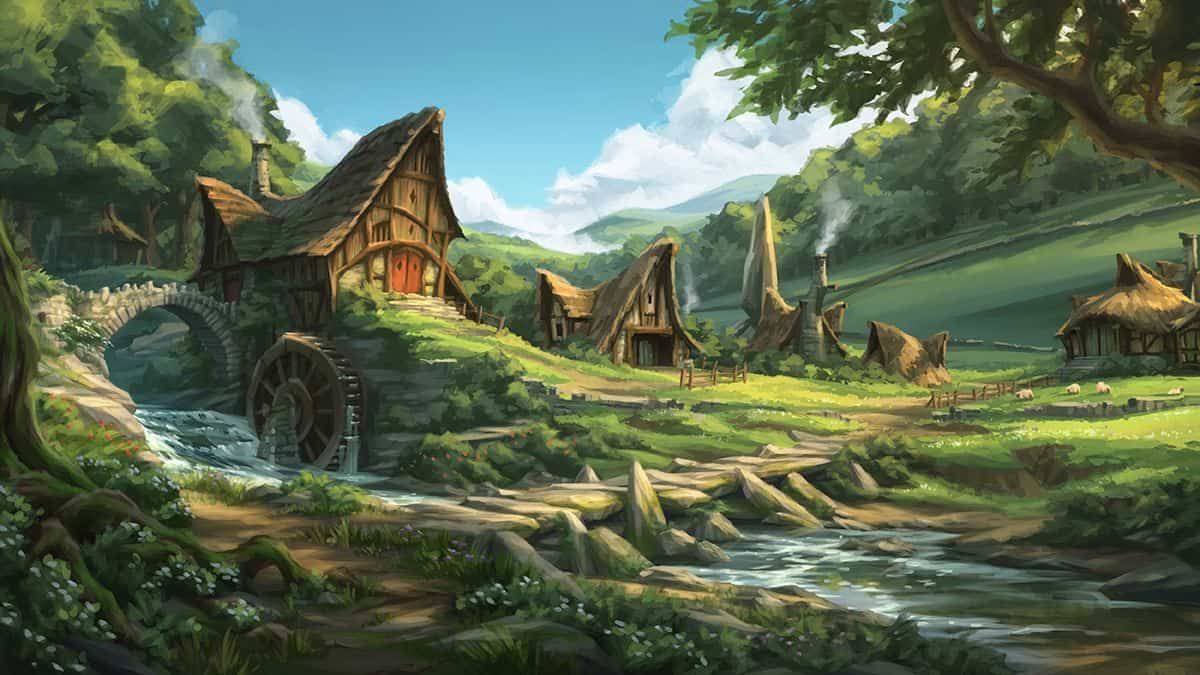Farmland
Farmland is a facility of universal presence in any 6-mile hex that's inhabited, specifically of types-7 through -1. Most often, cultivation is rectangular in form, with open or closed yards, surrounding or within walking distance of the house proper. This is true whether or not the farmer and family owns the land, or if, as in the case of estate farming, the designated farmland of a serf or peasant is laid out in lots side by side with those of other families. Farmland in such cases is overseen by a Hayward, who carries the authority of the local squire or noble, but normally farms are managed by individual families. Typically, the farmland owned by a single family is split into multiple fields, typically with each covering between 7 to 10 acres.
Settlements add +1 bread when they occur, so with regards to farming, advance the hex-type upwards with regards to statistics.
Calculations
| Detail | Bread-2 | Bread-3 | Bread-4 | Bread-5 | Bread-6 | |||
|---|---|---|---|---|---|---|---|---|
| type-7 | type-6 | type-5 | type-4 | type-3 | type-2 | type-1 | ||
| acreage under plough | 250-400 | 300-450 | 500-1500 | 600-1600 | 700-1700 | 1100-2600 | 1600-4200 | 3000-8000 |
| (roll acreage) | (d4+4 x50) | (d4+5 x50) | (2d6+3 x100) | (2d6+4 x100) | (2d6+5 x100) | (3d6+8 x100) | (4d10+20 x100) | (10d6+40 x100) |
| general yield per acre | 3:1 | 3½:1 | 4:1 | |||||
| total food (lbs.) | 40,625 | 46,875 | 125,000 | 137,500 | 150,000 | 231,250 | 525,000 | 937,500 |
| farmer population | 50-80 | 50-100 | 70-120 | 80-140 | 90-150 | 140-340 | 240-600 | 460-1000 |
| (roll population) | (d4+4 x10) | (d6+4 x10) | (d6+6 x10) | (2d4+6 x10) | (2d4+7 x10) | (4d6+10 x10) | (4d10+20 x10) | (6d10+40 x10) |
Settlements, when they occur, add +1 bread to the hex, regardless of type. Therefore, when determining the details of a hex, prioritise the number of bread over the hex type.
Land is traditionally divided into virgates of 30 acres each; small or poor families may survive with a bovate of 15 acres. When distributing land in a hex, account for virgates or bovates having slightly more or less than their defined acreage.
Each acre of farmland produces some 125 lbs. of food per year for the owner. Not all of this derives from crops; 35% originates through hunting, fishing, foraging and stock raising. Some farmers may focus on livestock and grow no crops at all. Average calorie consumption is 2900 calories per day; as a rough estimate, this equals approximately 1.9 lbs. of food per day on average, though obviously some eat a lot more and some cannot find this much. Excess food for a given family can be bartered or sold elsewhere.
Society
Bread-2: residents are squatters, self-describing themselves sometimes as pioneers and settlers. They don't own the land they work but at the same time the land is also unclaimed by any one entity except the realm. They are subject to occasional tax farmers. Typically, they dwell in hovels, supported by unsheltered gong boxes located 60 ft. distant from house.
Bread-3: residents are variously freeholders with land rights, tenant farmers paying taxes to a landlord or serfs subject to a local squire, knight or minor noble. Serfs dwell in hovels; tenant farmers in daub & wattle houses between 300 and 450 sq.ft. Freeholder dwellings are some 50% larger than those of tenants and incorporate wooden floors and support beams above an underground cellar. Tenant and freeholder farms include a semi-enclosed yard, with ancillary cowshed, coop, pig pen, and roofed outhouse. As hex type increases, yards become more developed, accumulating up to 7 or 8 buildings, including a barn.
Bread-4 & better: land becomes increasingly occupied by estates, increasing the number of serfs and tenant farmers, while freeholders become increasingly scarce until collectively the class owns a mere 1 in every 20 acres. Likewise, serfs and tenants suffer from heavy obligations and taxes, so that their lives are less comfortable than the farmers of less developed areas. Without capital, however, a tenant has little choice but to endure or abandon farming, while serfs are often forced by law to remain tethered to their land. In this, the farming culture resembles the 14th century more than the 17th; the anachronism is intentional.
See also,
Hamlet
Hammer (symbol)
Land Clearance
Open-field Farming
The Adventure
Type-7 Hex
